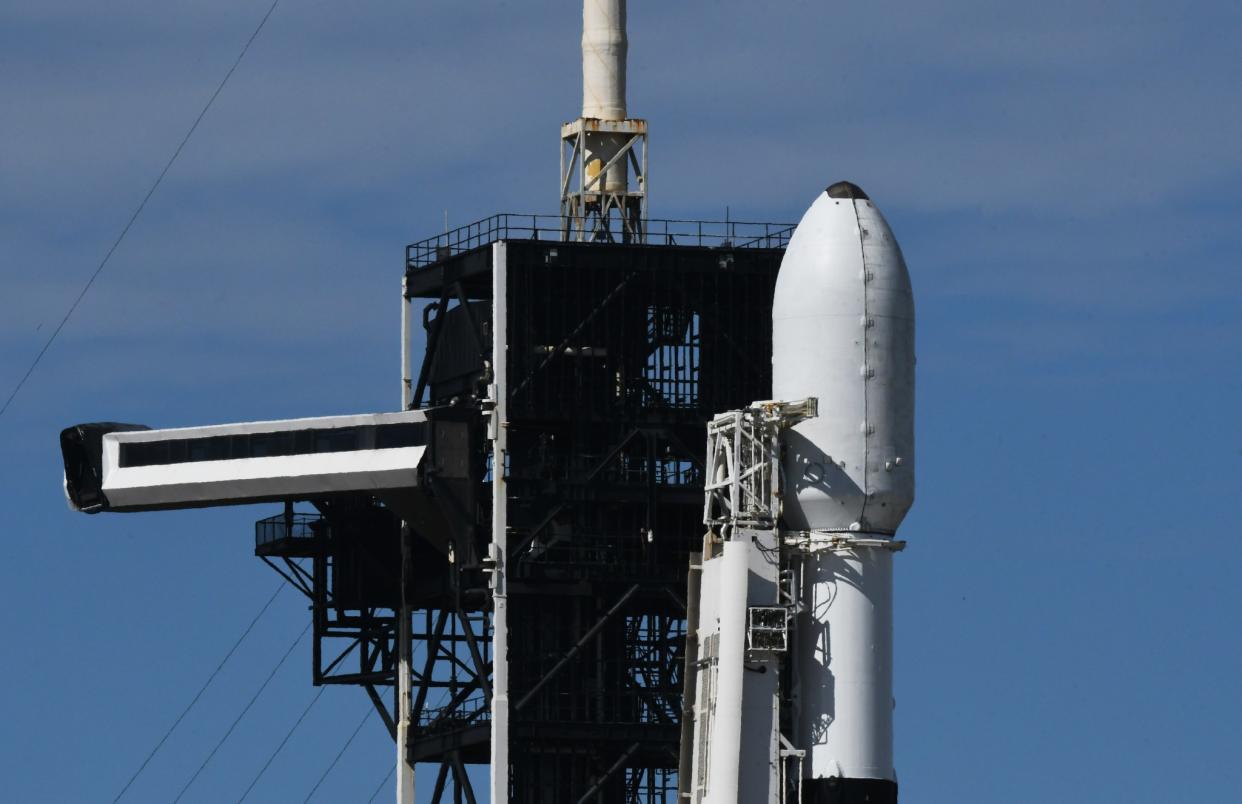Tonight’s SpaceX launch—if successful—will be major milestone towards Elon Musk’s plan to send humans to Mars

One small step for man. A giant one for SpaceX.
Barring weather or other delays, SpaceX is expected this evening to launch a privately-funded unmanned spacecraft built by Intuitive Machines in what will be the United States’ first return to the moon since 1972.
The mission—where space startup Intuitive Machines will transport scientific instruments for NASA and for commercial customers to the South Pole region of the moon—is a key moment for both U.S. space travel and specifically for Elon Musk, whose long-term vision for SpaceX is to send humans to Mars. SpaceX has become an indispensable part of the commercial space industry under Musk, regularly transporting satellites into orbit for customers and ferrying astronauts to the Space Station. But Musk’s ultimate goal is to “make humanity multi-planetary,” and SpaceX’s experience traveling to planets is still untested.
With the liftoff of SpaceX Falcon 9 and Intuitive Machines’ Nova-C moon lander on Tuesday evening from NASA’s Kennedy Space Center in Florida, the mission that gets underway could deliver key findings that U.S. companies and NASA can use to eventually start transporting people to other planets.
“Either the knowledge we get or the actual location is going to end up being our jumping-off point to send people to Mars and to other planets after Mars,” Joel Kearns, deputy associate administrator for exploration in NASA's science mission directorate, said on a call with reporters on Tuesday afternoon.
But there’s a lot that could go wrong at launch. Just last month, space company Astrobotic Technology’s moon landing attempt was thwarted a few hours after liftoff when its spacecraft experienced a propulsion system failure and lost too much fuel. Intuitive Machine’s mission this evening required special adjustments from SpaceX due to IM’s propulsion system, which requires a mixture of liquid oxygen and liquid methane.
“This is not an easy mission for us,” Bill Gerstenmaier, a SpaceX vice president, said on the call Tuesday, noting that the company had added a quick disconnect onto the Falcon’s side and that it has to super-cool both the liquid methane and liquid oxygen before loading them into the spacecraft—something he says was “not trivial.”
“There's no guarantee of success on this mission,” Gerstenmaier said on the call. “But I can say we've worked extensively with Intuitive Machines to buy down as much risk as we can.”
Should the launch go successfully, Intuitive Machines’ spacecraft will land on the moon on Feb. 22, upon which NASA stereo cameras and other instruments will investigate the lunar surface at the South Pole region to help improve future landing precision and safety and pave the way for future Artemis astronaut missions. As part of the mission, Intuitive Machines is also carrying commercial instruments into space for data collection.
Intuitive Machines started prepping for this mission in 2019, back when it was handed its first contract from NASA as part of an initiative to pay private companies to deliver its research instruments to the moon. This specific contract is worth a little under $118 million.
Now the spacecraft just needs to launch and start making its way to the moon. “Weather is good. Vehicles are good. SpaceX is good. I think we're good for launch tonight,” Trent Martin, vice president of space systems at Intuitive Machines, said.
Do you have an insight to share? Got a tip? Contact Jessica Mathews at jessica.mathews@fortune.com or through the secure messaging app Signal at 479-715-9553.
This story was originally featured on Fortune.com




